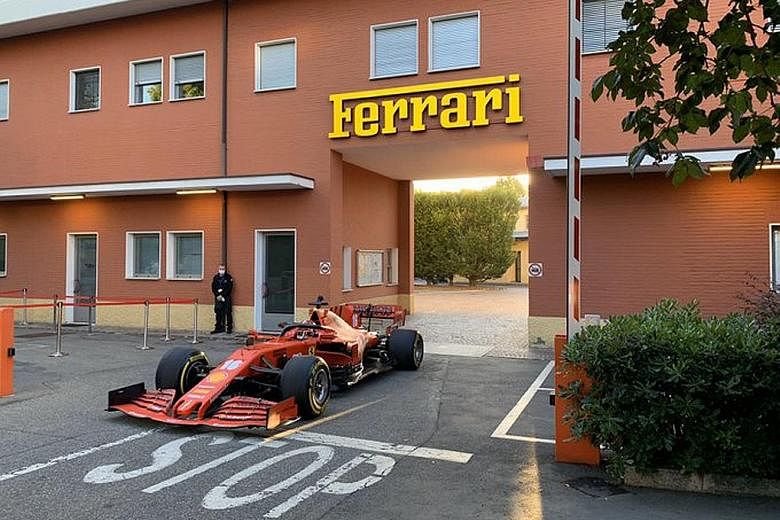LONDON • Formula One mechanics could take twice as long to change an engine under new measures to protect them from Covid-19 and reliability will be key, according to Racing Point technical director Andrew Green.
The new protocols come into force when the season starts in Austria on July 5 and he told reporters on Thursday that his team were coming to terms with the new reality of everything taking more time.
The procedures restrict the number of mechanics and engineers working on the car together. Team members must also wear protective equipment such as masks.
"It's very different and it's going to be a real challenge going forward," he said after the team conducted a limited mileage test at Silverstone on Wednesday with Canadian Lance Stroll.
"Jobs now take a lot longer, and we have to try and manage that."
Teams are already subject to curfews during a race weekend, aimed at ensuring mechanics do not work through the night, which adds to the headache.
They face eight races in 10 weekends once the delayed season starts and Green said drivers needed to be aware of how long it could take to fix damage from any practice incidents.
"I suspect changing an engine now will take quite some time," he said.
"We can only have certain members of the crew working on the car at any one time, and that does limit the speed in which you can do a power unit change.
"When we get into the real meat of the car, and centre on the power unit, we're probably looking at, in some cases, it taking twice as long."
Meanwhile, Charles Leclerc drove his Ferrari through the streets of Maranello on Thursday as the Italian team fired up for the first time since the pandemic halted track activity in March.
Ferrari said the 22-year-old Monegasque was the first driver of the modern era to have driven an F1 car through their home town.
The low-speed run, which ended at the Fiorano test track without Leclerc completing any laps, came 110 days after the SF1000 car last turned a wheel at testing in Spain at the end of February.
"I don't normally like getting up early, but this morning there was a great reason to do so," commented Leclerc, who recognised his raucous run may have woken up some of the citizens.
"It was exciting to get back in the car today, particularly on such a special route. Being back in the cockpit felt like coming home again.
"It seemed like a fun way of saying we are ready to get back on track."
REUTERS

